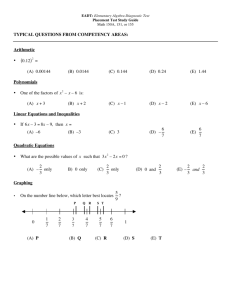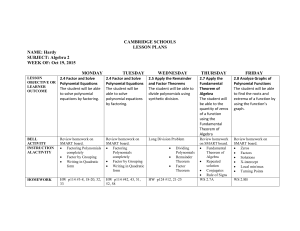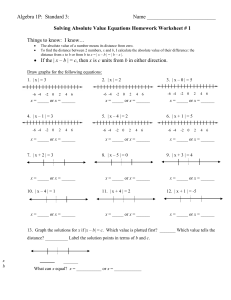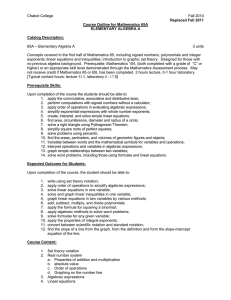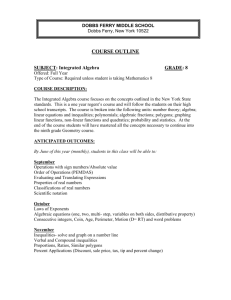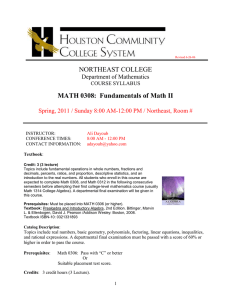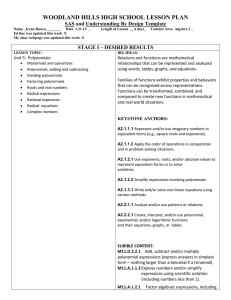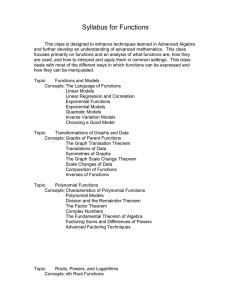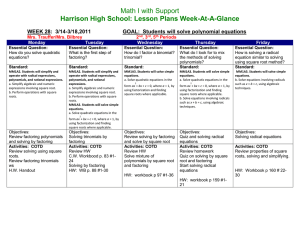MATH 101 Contents
advertisement
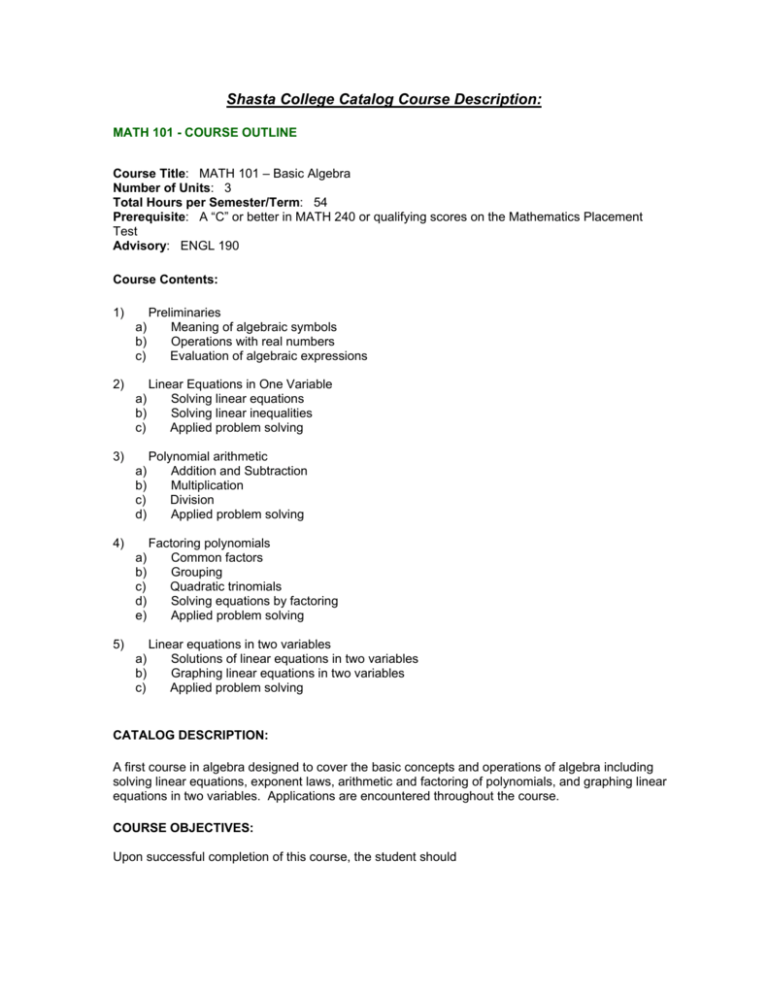
Shasta College Catalog Course Description: MATH 101 - COURSE OUTLINE Course Title: MATH 101 – Basic Algebra Number of Units: 3 Total Hours per Semester/Term: 54 Prerequisite: A “C” or better in MATH 240 or qualifying scores on the Mathematics Placement Test Advisory: ENGL 190 Course Contents: 1) a) b) c) Preliminaries Meaning of algebraic symbols Operations with real numbers Evaluation of algebraic expressions a) b) c) Linear Equations in One Variable Solving linear equations Solving linear inequalities Applied problem solving a) b) c) d) Polynomial arithmetic Addition and Subtraction Multiplication Division Applied problem solving a) b) c) d) e) Factoring polynomials Common factors Grouping Quadratic trinomials Solving equations by factoring Applied problem solving a) b) c) Linear equations in two variables Solutions of linear equations in two variables Graphing linear equations in two variables Applied problem solving 2) 3) 4) 5) CATALOG DESCRIPTION: A first course in algebra designed to cover the basic concepts and operations of algebra including solving linear equations, exponent laws, arithmetic and factoring of polynomials, and graphing linear equations in two variables. Applications are encountered throughout the course. COURSE OBJECTIVES: Upon successful completion of this course, the student should 1. 2. 3. 4. be able to evaluate algebraic expressions and "formulas." be able to use formulas to solve realistic problems. be able to evaluate expressions containing integer exponents. be able to use the simplification rules for products, quotients and powers of expressions containing integer exponents. 5. understand the concept of a function using an input/output or independent/dependent model. 6. be able to solve a linear equation in one variable. 7. be able to solve a linear inequality in one variable and graph the solution set on the number line. 8. be able to graph the solution sets for: x < n , x > n , x ≤ n , x ≥ n on the number line. 9. be able to graph solutions of an equation in two variables by plotting points. 10. be able to read and interpret a graph. 11. be able to describe the geometric meaning of the slope of a line as EQ \f(rise,run). 12. be able to add, subtract, and multiply polynomials. 13. be able to divide a polynomial by a monomial. 14. be able to factor out the GCF from a polynomial. 15. be able to factor a polynomial by grouping.


